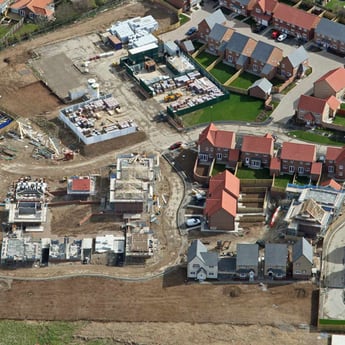Letwin is right that land-banking is a myth, but there is more that can be done to accelerate housing delivery

Thanks to Sir Oliver Letwin’s independent draft analysis of the housing sector, published last week, we can now in good faith move beyond the land-banking accusations that have increasingly dominated conversations on the cause of the housing crisis in recent years.
The, now debunked myth that major housebuilders have purposefully blocked delivery in order to extract more value from a site as time passes, has caused unhelpful confusion and distracted from the real obstacles and accelerators to delivering much needed housing throughout the UK.
With this in mind, we need to move and deal with the real issues that affect the delivery of housing in this country.
At the top of the list has to be speeding up delivery on larger sites. Developing land, whether greenfield or brownfield, is complicated, costly and time consuming. Larger sites often have added complications and costs associated with the improvement of local infrastructure – demanding more time and resources to deliver. Reviewing related policy considerations will in particular be one of Oliver Letwin’s next tasks in advance of his full report being published alongside the Autumn Statement later this year.
However, speeding up housing delivery is just one of a number of initiatives required to fix the market. All will take time to implement, but each will contribute to the solution. Letwin for example believes primarily that a key to solving the housing crisis is for the major housebuilders to offer more housing of varying types, designs and tenures on large sites.
Looking beyond the recommendations made in the report, there are other measures that I believe can be taken.
For a start, it is essential that we increase the supply of development land, and for this we need more sites to be given planning permission and a greater number of sites to be allocated above current housing target numbers for each authority area.
Next, we need to simplify the planning process and provide greater resource to the local planning authorities to deal with planning applications faster, whilst also considering government assistance for infrastructure funding will provide support for large sites. This is already being discussed by Homes England and could prove a real catalyst to delivery if successful. In addition, further support should be given to SMEs in the development sector as proven by the initial moves to do this by Homes England.
We need to develop better systems and off-site manufacturing processes to speed up delivery of homes, also bridging the growing skills gap in the construction industry.
Finally, we need to think beyond the expected models of delivery. To this end, self-build is an underrated area of the market that could deliver more, so should a more effective policy be put in place that more widely encourages it? What if every village in the country identified an adjoining area of land that could deliver 10 units and provide some incentive to these villages that achieve something in a quick timescale?
Overall, a more flexible approach on housing tenure is required that will enable large investments in build-to-rent and sites of marginal viability to come forward quickly. There are billions of pounds of investment available from pension funds and investors both overseas and at home that want to develop a professional large private housing sector portfolio, let’s leverage it to maximise the impact on housing delivery in this country.
